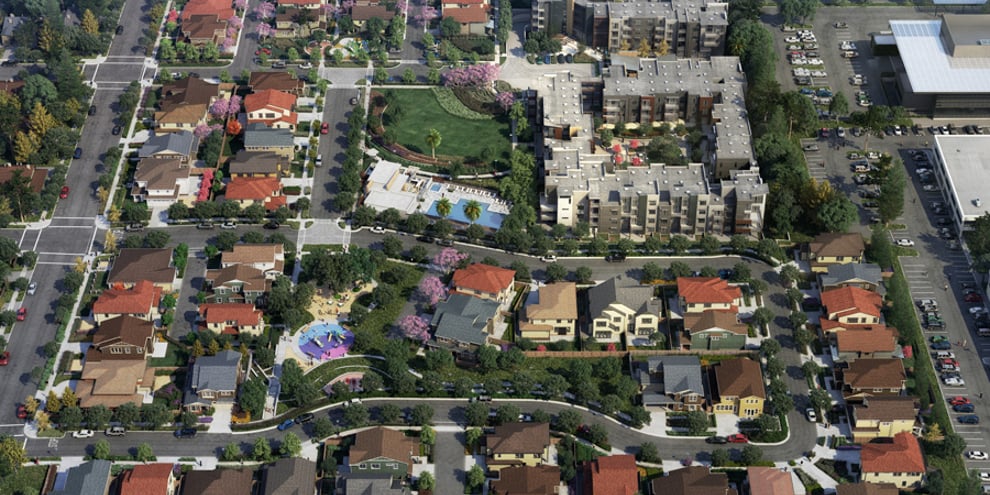On Feb. 23, Stanford filed a federal lawsuit against multiple Hewlett-Packard companies, seeking millions in damages for HP’s purported chemical contamination of “substantial portions” of 1601 S. California Avenue — land that Stanford owns — during a grading project sometime between 1970 and 1999. The named corporations in the original lawsuit are Hewlett-Packard Company, Hewlett Packard Enterprise (HPE) and Agilent Technologies.
Now, Stanford faces a counterclaim from Agilent and HP companies, which jointly issued a 20-page response to the University’s claims, as well as a counterclaim, in the San Jose U.S. District Court on April 30.
In the counterclaim, Agilent and HP companies stated that Granger Associates, a former tech company that held the property between 1962 and 1970, discharged hazardous polychlorinated biphenyls (PCBs) and trichloroethylene (TCE) on the land.
According to University spokesperson E.J. Miranda, however, the companies “cited no evidence that would support their allegation.”
The issue arose when Stanford began construction of University Terrace, a 180-home neighborhood for Stanford faculty members and their families. 1601 S. California Ave. represents just one of the properties included in University Terrace.
“When Stanford tested the soil before the start of its construction project in 2015, Stanford found further areas of PCB contamination that had not been cleaned up by HP and also discovered TCE contamination,” Miranda wrote.
The University spent millions of dollars in cleanup and mitigation in order to prepare the land for residential use. Hewlett-Packard Company also removed TCE and PCBs allegedly discharged by Granger when it owned the property.
Stanford originally sued under a provision of the Comprehensive Environmental Response, Compensation and Liability Act, which holds parties responsible for any contamination they cause to areas. If successful, Stanford could recover the money it paid to remedy the toxic waste.
In their response to the lawsuit, Agilent and HP companies claim Stanford should reimburse them for Hewlett-Packard Company’s expenditures investigating, identifying and removing TCE and PCBs, as well as the costs they incurred remediating the land between 1970 and 2005. Agilent, a spinoff of the original HP company, held the property from 1999 to 2005, before Stanford leased the property to Facebook and then Theranos, Inc., a health tech company.
In the counterclaim, Agilent and HP also assert that Stanford’s lawsuit does not prove Hewlett-Packard Company holds liability for the contamination, which the companies referred to as an “Act of God” or an exceptional natural disaster. The companies further asserted that Stanford knew of Granger’s chemical discharge for decades before the cleanup.
However, in his email to The Daily, Miranda stated that the University was not aware of the TCE contamination. He noted that a “sump site” uncovered by HP in the 1980s was tested and not found to contain “significant” TCE. A sump site is a below-ground chamber that can be used to separate chemicals from the surrounding environment.
“The recent discovery of TCE contamination was a distance from that sump site,” Miranda wrote. “There is substantial evidence that HP is responsible for the TCE contamination — HP admitted in documentation it submitted to the State of California that it used 400 gallons per year of TCE on the property.”
Miranda reiterated that Stanford did not cause the contamination and that the University has no evidence that Granger caused any TCE contamination. He noted that the University Terrace construction succeeded despite complications caused by the contamination.
“As a result of HP/Agilent’s failure to clean up all the contamination on this site for which they are responsible, Stanford had to pay millions of dollars to clean up the soil and suffered delays and other damages,” Miranda wrote.
Miranda said that because of Stanford’s cleanup efforts, the EPA deemed the area “suitable for residential purposes.”
According to Agilent and HP companies, The California Regional Water Quality Control Board issued a “no further action” letter to Hewlett-Packard Company in 1998 indicating the problem had been addressed according to standards. This allegedly occurred after the company sealed an underground plating sump that it discovered in 1990 and contends was created by Granger. During its lease, HP claims TCE and PCB levels remained below regulatory thresholds.
Agilent and HP companies argue that Stanford accepted the property in “as is” condition “with all faults” in 2004. Then, in 2005, HP companies claim Stanford agreed to indemnify, defend and hold Agilent harmless “arising out of or relating to events occurring on or after the date of the agreement.”
Although Hewlett-Packard Company owned the land, its corporate successors — Agilent, HP Inc. and HPE — are also defendants of the original lawsuit because they assume all assets and liabilities of their predecessor, according to the University.
Papers filed by HP companies request dismissal of all claims against HPE. Hewlett-Packard Company split into HP, Inc. and HPE in 2015.
Agilent and HP Companies request that the court decide on both the companies’ and Stanford’s liability for previous and future remediation expenditures at 1601 S. California Avenue.
Palo Alto Online reported that Agilent is handling defense of the lawsuit.
According to Agilent spokeswoman Stephanie Notaney, “the company has a strict policy prohibiting discussions or comments regarding potential litigation.”
Contact Holden Foreman at hs4man21 ‘at’ stanford.edu.
